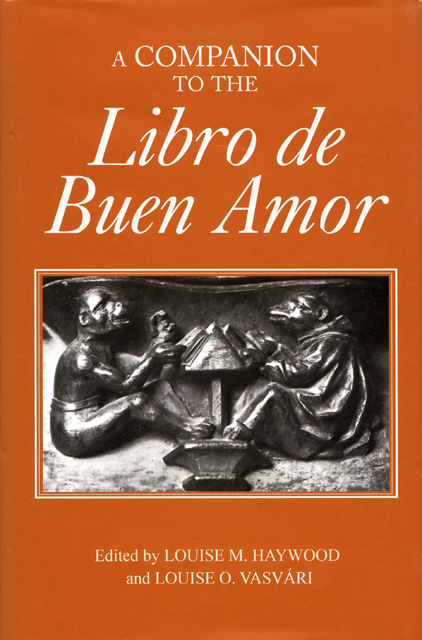Book contents
‘Was it a Vision or a Waking Dream?’: The Anomalous Don Amor and Doña Endrina Episodes Reconsidered
Published online by Cambridge University Press: 10 May 2023
Summary
The juge dremeth how his plees been sped; [. . .]
The lovere met he hath his lady wonne.
(Chaucer, The Parliament of Fowls, ll. 101 and 105; Benson et al. 1988: 386)Do sheepdogs dream of counting sheep?
(Connor 2002)The anomalies
The Libro de Buen Amor is a patchwork of anomalies, ambiguities, inconsistencies, ironies, and pitfalls for its interpreters. To say that any episode of the Libro is anomalous may seem like tautology, but the linked episodes of the debate with Don Amor and the seduction of Doña Endrina, beginning at stanza 180 and continuing to stanza 909, are, even when judged by the high standards of oddity that Juan Ruiz sets himself, notably anomalous. One oddity is apparent at the outset: Don Amor’s large size.
Ca, segund vos he dicho, de tal ventura seo que, si lo faz mi signo o si mi mal asseo, nunca puedo acabar lo medio que deseo; por esto a las vegadas con el Amor peleo.
Dirévos una pelea que una noche me vino, pensando en mi ventura, sañudo e non con vino: un omne grande, fermoso, mesurado, a mí vino; yo le pregunté quién era; dixo: ‘Amor, tu vezino’.
This chapter is a considerably revised version of a paper read to the Medieval Hispanic Research Seminar, Queen Mary and Westfield College, on 31 March 2000. I am grateful to those present for comments that have helped in the work of revision, and to those who read drafts of the chapter for a number of useful suggestions.
The personified god of love is traditionally depicted, both in literature and in art, as the young child Cupid. Jacques Joset discusses his anomalous presentation as ‘un omne grande, fermoso, mesurado’ and considers possible reasons for this (1988: 115–26). Yet however one accounts for this large and imposing figure, both his size and his sudden appearance remain surprising. Even more surprisingly, there is, much later, an indication that Don Amor’s size may not be permanent: ‘Eres muy grand gigante al tienpo del mandar, / eres enano chico quando lo as de dar’ (401ab). These words form part of one of the series of reproaches uttered against Amor, and are a metaphorical amplification of ‘prometes grandes cosas, poco e tarde pagas’ (400d), but why is this metaphor of shape-changing chosen?
- Type
- Chapter
- Information
- A Companion to the Libro de Buen Amor , pp. 107 - 122Publisher: Boydell & BrewerPrint publication year: 2004
- 17
- Cited by

